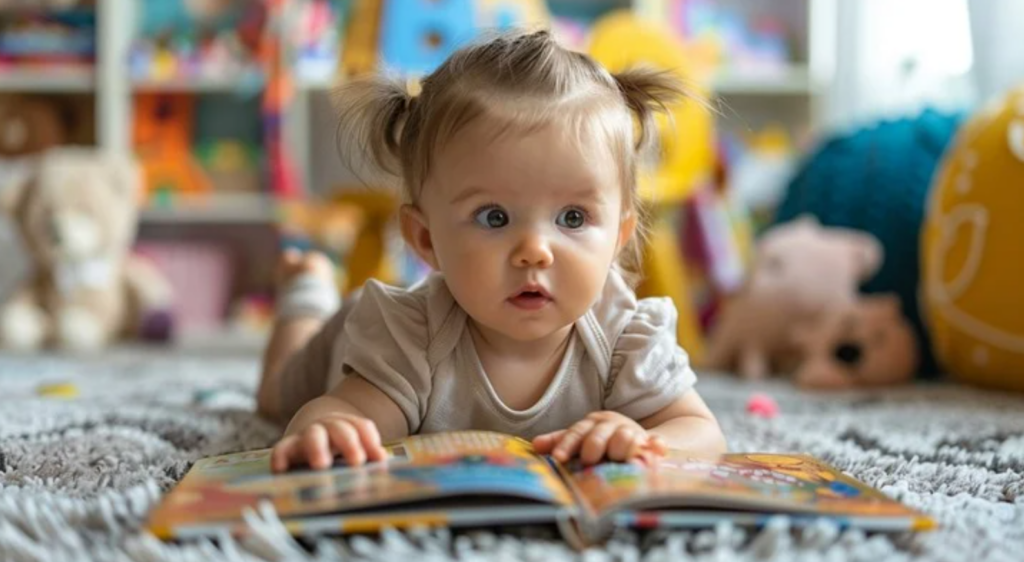Choosing the right book for your newborn can be a delightful and impactful decision for both parents and babies. While newborns cannot comprehend complex stories or words, the right baby book can play a crucial role in their early cognitive and sensory development. In this article, we will guide you on how to select the best books for your baby’s first reading experience and how these books contribute to their early enlightenment.
Why is Choosing the Right Book Important for Newborns?
Newborns experience rapid brain development during their first few months, and books play an essential role in stimulating their growth. From the soothing sound of a parent’s voice to the visual stimulation of colorful images, the right book helps babies begin to recognize patterns, shapes, and sounds. This early exposure to literature enhances cognitive skills, language development, and even emotional bonding between parents and babies. Research from the American Academy of Pediatrics highlights that reading to babies, even at an early age, fosters brain development and improves vocabulary skills as they grow.
Factors to Consider When Choosing Baby’s First Book
When selecting an educational book for your newborn, there are several factors to consider that will ensure the book serves its purpose in both entertainment and developmental enrichment.
1. Age-Appropriate Content
Choose books specifically designed for newborns or infants. These books typically feature simple illustrations or patterns in high-contrast colors that are ideal for babies’ developing eyesight. Bright primary colors, such as red, blue, and yellow, are especially effective for visual development in young babies. Furthermore, ensure that the content of the book is age-appropriate. For newborns, books with no text or minimal text (e.g., “This is a red ball”) are ideal. As they grow older, more complex stories with rhythmic language can be introduced.
2. Durable and Safe Materials
Newborns explore the world primarily through their senses, which includes putting objects in their mouths. Therefore, baby books should be made from safe, non-toxic materials. Opt for board books or fabric books that are durable and easy to clean. Additionally, books with rounded corners reduce the risk of injury. There are also chewable baby books made from soft, safe silicone, which can withstand the inevitable chewing from teething infants.

3. Engaging Visuals and Textures
Books for babies should be visually stimulating and engaging. Books with textured elements—such as soft fabric, crinkly pages, or raised surfaces—help babies develop tactile sensory skills. Touch-and-feel books are highly popular because they provide interactive experiences for babies while helping to build sensory awareness. These books can teach babies about different textures such as smooth, bumpy, or soft, which they can feel with their hands.
4. Simple Stories or Rhymes
While newborns won’t understand complex narratives, they are responsive to the rhythm and tone of language. Simple, repetitive rhymes, such as nursery rhymes or songs, are perfect for developing early language skills. The soothing and rhythmic patterns of such texts promote early auditory learning, helping babies to develop listening skills and recognize the sounds of speech. These types of books encourage bonding moments between parents and babies as the soothing sounds of a parent’s voice engage and comfort them.
5. Interactive Books
Books that allow interaction can keep your baby engaged longer. Pop-up books, books with flaps to lift, and books with buttons to press for sounds all provide a level of interactivity that promotes engagement. These books can stimulate motor skills and cause-and-effect learning, which are crucial aspects of a baby’s development.
Top Book Recommendations for Newborns
When looking for the perfect book, consider some trusted titles that are known for their developmental benefits:
- “Black and White” by Tana Hoban
This book features simple high-contrast images that are perfect for stimulating a newborn’s vision. - “Where Is Baby’s Belly Button?” by Karen Katz
This lift-the-flap book helps teach babies about body parts while encouraging interaction. - “The Very Hungry Caterpillar” by Eric Carle
A classic book known for its engaging illustrations and simple, rhythmic text that appeals to both infants and older children.
Conclusion
Choosing the right baby book for your newborn is more than just about entertaining them; it’s about laying the foundation for their cognitive, emotional, and sensory development. When selecting a book, consider factors such as age appropriateness, safety, engagement, and interactivity. Books that feature high-contrast visuals, tactile elements, and simple rhymes can help stimulate your baby’s growing brain. By making the right choice, you are not only enriching their world today but also preparing them for future educational success.
